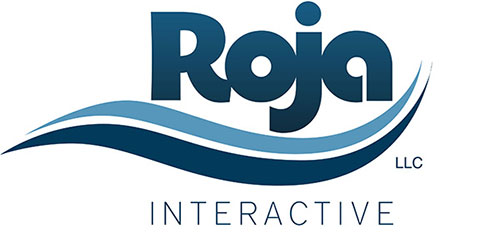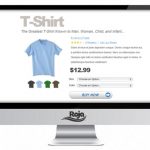What Every Effective Landing Page Needs to Be Successful
Webpages are not one-size-fits-all. They’re not even one-size-fits most.
When running a online marketing campaign, you are going to find that your website is very effective for some users, and very ineffective for other users. This happens partially because of the mindset of each individual, and partially because of how they come across your website. When a consumer finds your website through Google, they are mentally prepared for a website that differs greatly from the website Twitter, Facebook, and Tumblr users are expecting.
This means that you need landing pages that cater to each source of traffic and have their needs and desires in mind. Here are seven essentials that you need to understanding before you start crafting your landing page copy and design.
1. Create That Copy
Obviously, don’t just cut and paste the copy from your marketing campaigns. You should, however, ensure that the messages mirror each other, that they harmonize. One of the best ways to get someone to click away from your page is to present them with a discordant message. Keeping your messaging consistent will ensure a higher trust level and engagement.
Make sure your landing page copy is as interesting and engaging as possible while elaborating on the information providing by the advertisement. After all, if someone clicked through an advertisement, it was probably to obtain more information about the product or service being advertised. Make sure they don’t have to search for that information. Don’t make it hard on consumers.
In a recent QuickSprout article we learned that the Obama administration’s tested headlines for one of their marketing campaigns. This campaugn saw a 21% increase in conversions when their page copy related directly to their other campaigns or to previous pages.
Who wouldn’t want a 21% increase in conversions?;
2. Be a Problem Solver
This is the core of marketing.
The most effective advertisements provide a solution to a consumer’s problem. When that consumer clicks through to your landing page, tell them how you are going to solve whatever problem they have.
For example, if you run a weight loss business, your target market is everyone trying to lose weight. That is their problem, they “want to lose weight.” When they arrive at your landing page, your page title should tell them how you can solve their problem.
An effective, problem-solving headline might be, “How to Lose 15 Pounds in a Month.” Your consumer is going to be instantly engaged, as they now know this page will solve their problem. This concept is important for every single business in every single industry, so make sure to start your landing pages with titles that demonstarte value to your target market.;
3. Work Your Subheading
Once you have your consumer’s attention, you only have eight seconds to hold that attention before they become distracted and leave your page. It is not enough to offer them a helpful headline, you also need even more detail, in the form of a subheading. This subheading should elaborate on and explain the header while summarizing the page content clearly and concisely in one sentence.
Don’t waste your eight seconds by making your page visitors look for more information. Your consumers want fast, digestible information, so serve it up to them as cleanly as possible.;
4. Clarify Your Campaign
Even if you have a consumer’s attention, you don’t necessarily have their purchase.
If a particular page visitor is impressed with the design and information, they still may not be sure if what you offer is what they need. You can make it easy for them.
Going back to our weight loss example, adding a tag that includes who this workout and diet plan is suited for, can help people know whether or not they should invest their money in it. Even a line that says, “This plan is perfect for students, new mothers, working women, and even retirees!” is a great way to show your consumer that your product is not a waste of their money. Look, it says right there – it’s perfect for me!
Another way to clarify your product or service is to give copious examples of how it can be used and its many benefits.
A bulleted, easy-to-scan list of uses and benefits makes it even easier for interested parties to see whether or not they need what you offer.
For exmple, our weight loss landing page might mention a workout plan that lists the following benefits
- Save time
- Build muscle
- Keep you energized throughout the day
- Help you lose weight and keep it off.
When someone considering the product sees their specific desires listed right on your landing page, they are much more inclined to make a purchase.;
5. Back It Up
Whatever claims you make, provide data that supports those claims. Master copywriter, Neil Pate,l says, “Yes, you may be selling the best weight loss product out there, but a thousand other companies are making that same claim.” Unless you can present statistics that prove you outperform your competitors, it’s better not to make claims that you do.
Nothing is as powerful to consumers as the testimonials and reviews of other consumers. A thriving testimonial section, with legitimate, honest, and detailed reviews of your product and how it benefited the user, is crucial to convincing other consumers to make a purchase.
No matter how good your copy is, very few page visitors are going to be convinced by that alone. The marketplace is still driven by word-of-mouth recommendations. People want to see that others have had real success with your product before they invest any money in it, so provide them with those stories of success.;
6. The Call to Action
For some reason, many landing pages lack this essential feature. This is a crucial part of your page – probably the most important.
The call to action encourages the consumer to go beyond simply viewing the page and into making a purchase. These calls can be in the form of links and buttons or even simple text which asks the consumer to call a number for more information.
Every landing page needs to give the consumer multiple opportunities to take action, not just one at the bottom, or one just below your headline.
Test a couple of locations and remember that as with all copy on your page, the call to action needs to relate directly to the product. Simply saying, “Click here for more info” or “Buy Now!” won’t do the trick as well as a button that says, “Start losing weight today!”
Testing is key when it comes to this element of your landing page. Remember that visitors from disparate sources are going to react differently to different placements and wordings. Mixing them up, trying several different locations, and call tactics will help you find the right combination for the greatest percentage of conversions.;
7. Keep It Above Board
Unless your brand is as big as Amazon, you are going to need to prove your trustworthiness to every person who lands on your page.
The internet is a dangerous place to make purchases, and most people are wary of providing personal financial information unless they see the proper security measures in place. These are most commonly recognized by “trust seals,” or those badges that every legitimate commerce page has displayed.
These show your consumer that your webpage is not only safe, but also approved by companies whose sole purpose is to keep their information safe.
From landing to checkout, every page should be stamped with these seals. Most important, of course, is the checkout page, but having them on every page actually encourages consumers to take the actions necessary to get to that checkout page.
This is the best way to build trust between business and customer, especially because consumers can rarely walk into a brick-and-mortar establishment and meet you face to face.;
The Bottom Line
Now that you have the top elements of an effective landing page, don’t forget to fill your landing page with meaningful, valuable content. If you don’t want to clutter up the page with too many words, a testimonial video is a great way to go.
Be sure to keep testing different elements. Successful websites don’t have to be hit or miss. If your landing page is not leading to conversions, switch up your copy, call to action placement, and testimonials until those conversions start rolling in.






Leave a Reply